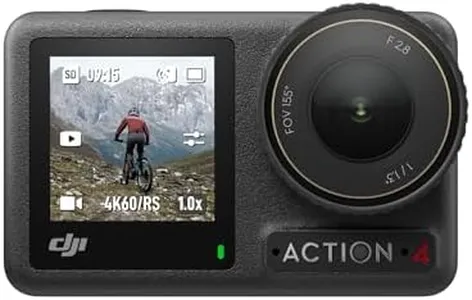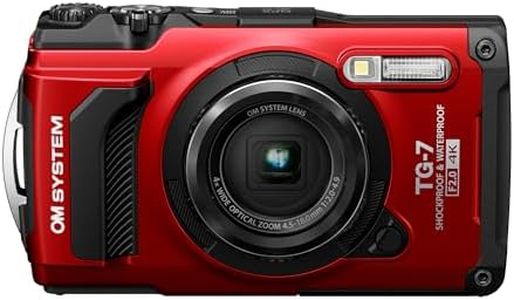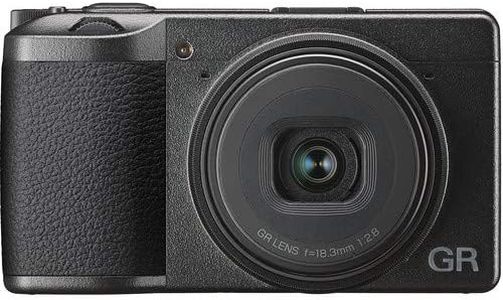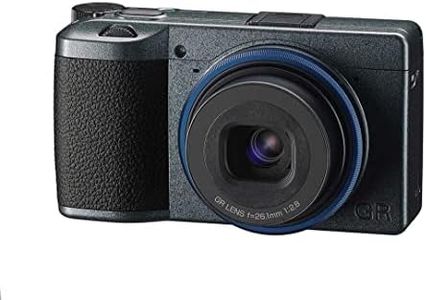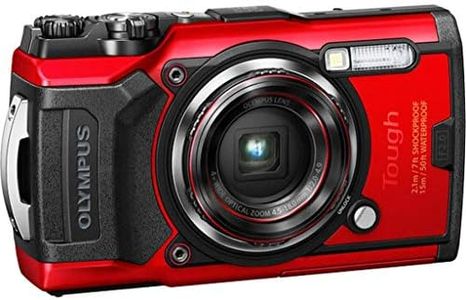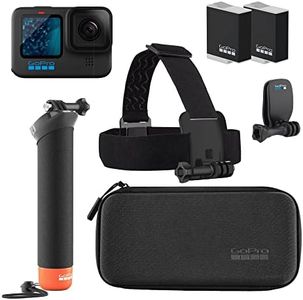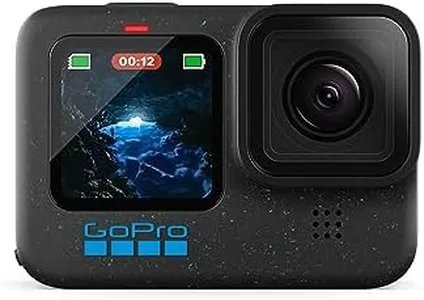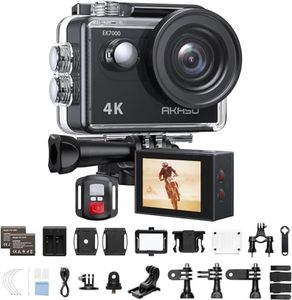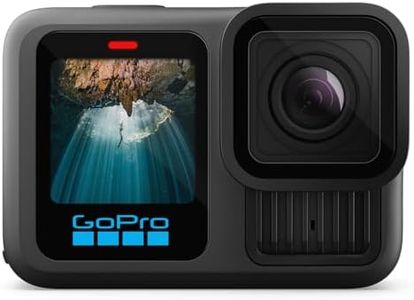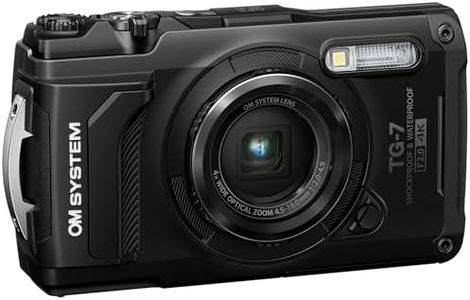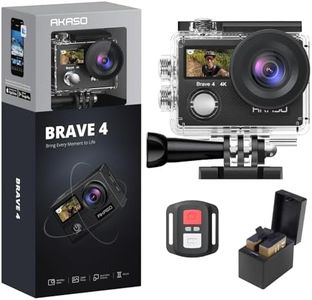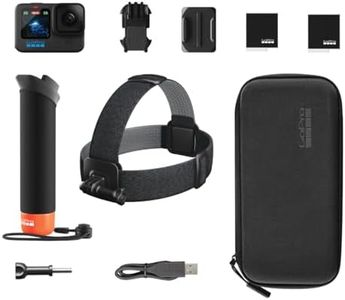We Use CookiesWe use cookies to enhance the security, performance,
functionality and for analytical and promotional activities. By continuing to browse this site you
are agreeing to our privacy policy
10 Best Rugged Cameras
From leading brands and best sellers available on the web.Buying Guide for the Best Rugged Cameras
When shopping for a rugged camera, it's important to remember that these cameras are designed to withstand harsh environments, drops, water, and dust. Your ideal choice depends on where and how you plan to use the camera. Start by thinking about your main activities—are you into hiking, diving, traveling, or extreme sports? Understanding your scenarios will help you match the most relevant features, ensuring your camera doesn’t just survive the conditions but also takes photos and videos that you’ll be happy with.Waterproof RatingThe waterproof rating indicates how well a camera can resist water and how deep you can use it underwater. This is usually measured in meters or feet, showing how far you can submerge the camera without causing damage. Ratings often start at around 5 meters for basic protection and can go up to 30 meters or more for advanced underwater use. If you only need your camera safe from rain or accidental drops in the sink, a lower waterproof rating is fine. But for snorkeling or diving, look for higher ratings to ensure the integrity and function of your camera underwater.
Shockproof RatingShockproofing tells you how well the camera can handle drops or bumps. This is usually stated in meters (how high the camera can be dropped onto a hard surface without breaking). Entry-level rugged cameras might survive drops from 1.5 meters, while tougher models can withstand 2 meters or higher. Consider the situations you expect—if you’re rough with your gear or plan to use the camera for action sports or with kids, a higher shockproof rating gives you more peace of mind.
Freezeproof RatingThe freezeproof rating shows the lowest temperature the camera can handle while still working properly, often given in degrees Celsius or Fahrenheit. Typical rugged cameras can function down to -10°C (14°F) or even lower. If you’ll be outdoors in winter or visiting icy locations, aim for a lower freezeproof threshold. For regular travel and indoor use, freezeproofing may not be as important.
Image Quality (Sensor Size and Megapixels)Image quality is essentially how good your photos and videos will look, often influenced by both the camera’s sensor size and its megapixel count. Bigger sensors generally deliver sharper images and perform better in low light, while more megapixels mean you can print or crop images without losing detail. For casual shots and social media sharing, standard sensor sizes and megapixel ranges will suffice. If you value higher-quality photos, especially in tough lighting, choose a camera with a larger sensor and a moderate-to-high megapixel count.
Lens and ZoomThe lens determines how much of the scene you can capture and how closely you can zoom in on subjects. Rugged cameras usually offer a built-in (non-removable) lens with either optical or digital zoom. Optical zoom provides clearer images compared to digital zoom, which can reduce quality. If photographing distant subjects (like wildlife or sports), higher optical zoom is useful. For group shots or landscapes, a wider lens matters more. Match the zoom and lens range to your usual photo subjects.
Battery LifeBattery life tells you how many shots or how much recording time you get before needing to recharge or swap batteries. Some rugged cameras have longer-lasting batteries, which are valuable for trips where charging is hard to find. If you’re planning to spend long days outside or away from power sources, prioritize longer battery life to avoid missing moments.
Build Quality and HandlingBuild quality covers the materials used, grip texture, and overall design, all of which affect how the camera feels in your hands and how easy it is to operate when wet or with gloves. A camera with a comfortable grip, simple interface, and visible buttons and dials is easier to use in difficult situations. If you’ll be wearing gloves or using the camera in wet conditions, look for models described as glove-friendly or with oversized controls.
Additional Features (GPS, Wi-Fi, Action Modes)Features like built-in GPS, Wi-Fi, or special shooting modes (underwater, action, timelapse) can make your camera more versatile and easier to share your adventures. GPS helps tag where photos were taken; Wi-Fi lets you transfer images to other devices easily. Consider what fits your activities—if you travel and want to remember photo locations, GPS is helpful. If you want fast sharing, Wi-Fi is convenient. If you shoot activities or sports, check for specific shooting modes.
